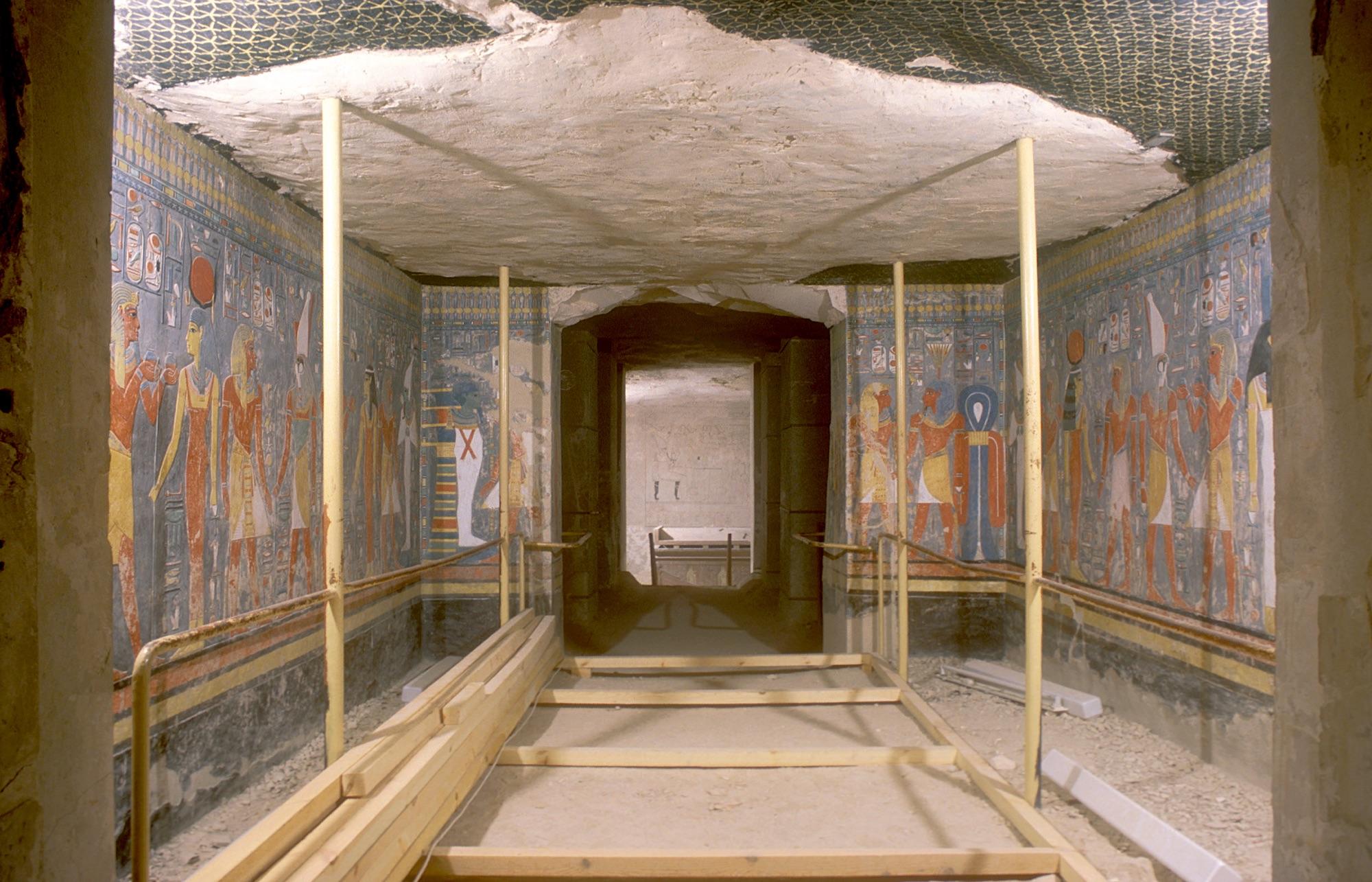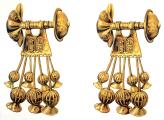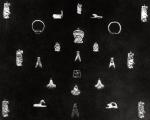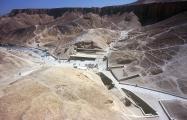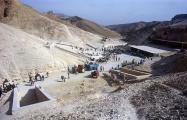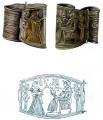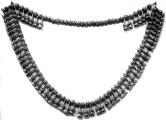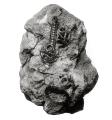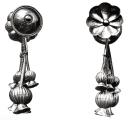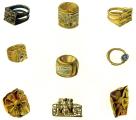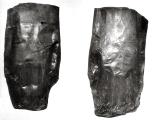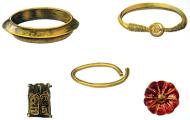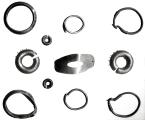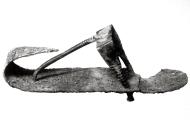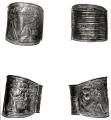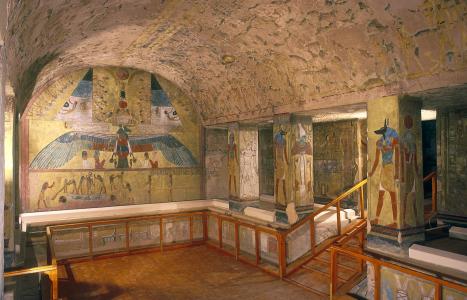KV 56
"The Gold Tomb"
Entryway A
See entire tombThe upper part of the shaft is composed of limestone chips and bedrock only on one side. The lower part is cut entirely through limestone bedrock.
Chamber B
See entire tombThe single chamber, if it had been cut totally, would have been the largest chamber in any shaft tomb in the Valley of the Kings. The rear (north) wall is unfinished.
Gate B
See entire tombThe lintel has broken away.
About
About
Noteworthy features:
Site History
The identity of the original owner of this tomb is unknown, if indeed KV 56 is a tomb at all. Since most of the objects found inside bear the names of Tausert and Sety II (as well as Rameses II), Maspero believed that all the materials found in KV 56 were taken from KV 14, the tomb of Tausert, which was usurped by Setnakht. Aldred, on the other hand, argued that KV 56 was not a cache, but rather an essentially intact burial of a child of Sety II and Tausert. He based his theory on the fact that near the left (west) wall of chamber B were remains of stucco, gold leaves and inlays, which could be from a Coffin.
Dating
This site was used during the following period(s):
Exploration
Conservation
Site Condition
The tomb has been recently re-excavated by the Amarna Royal Tombs Project.
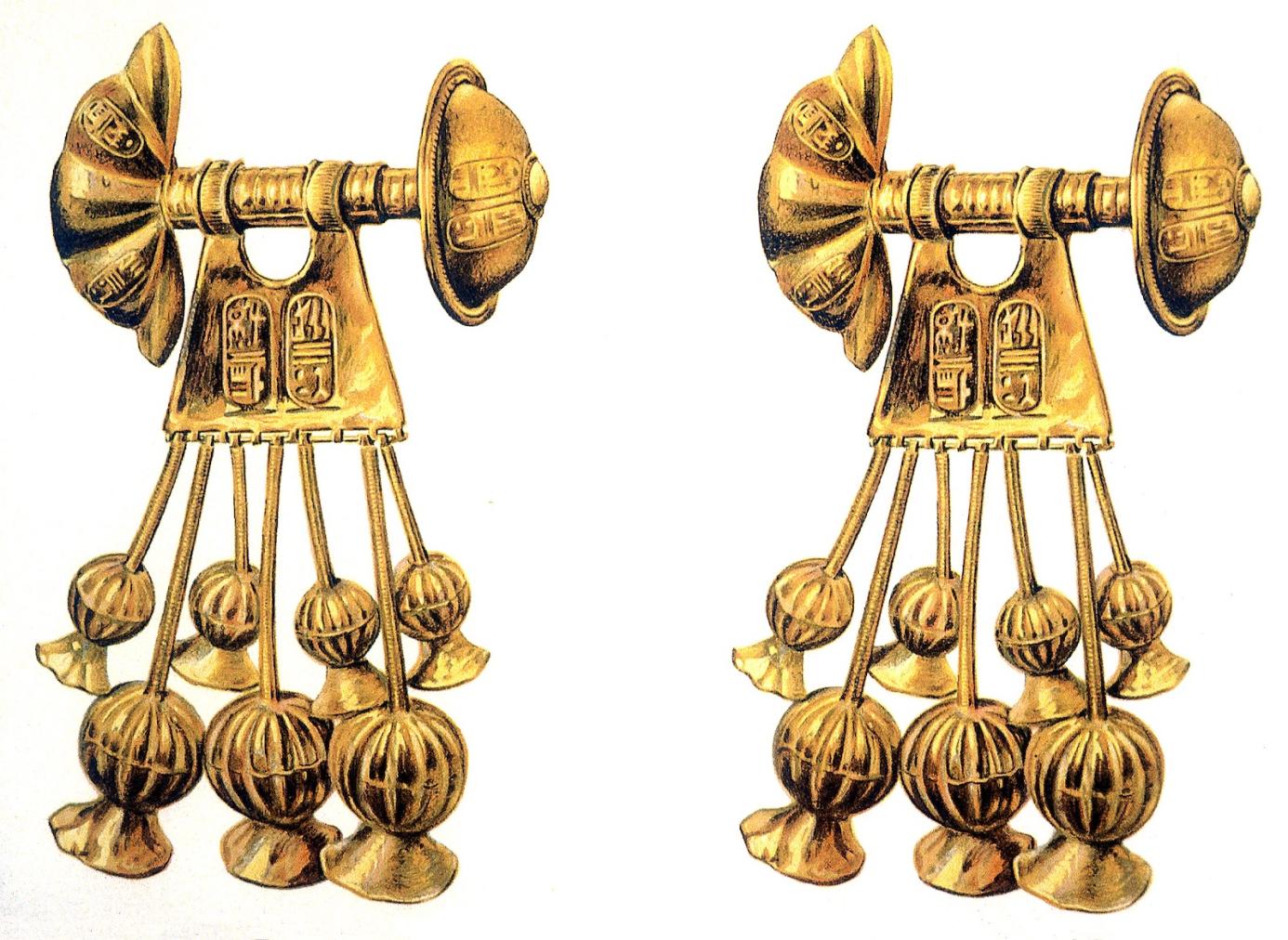
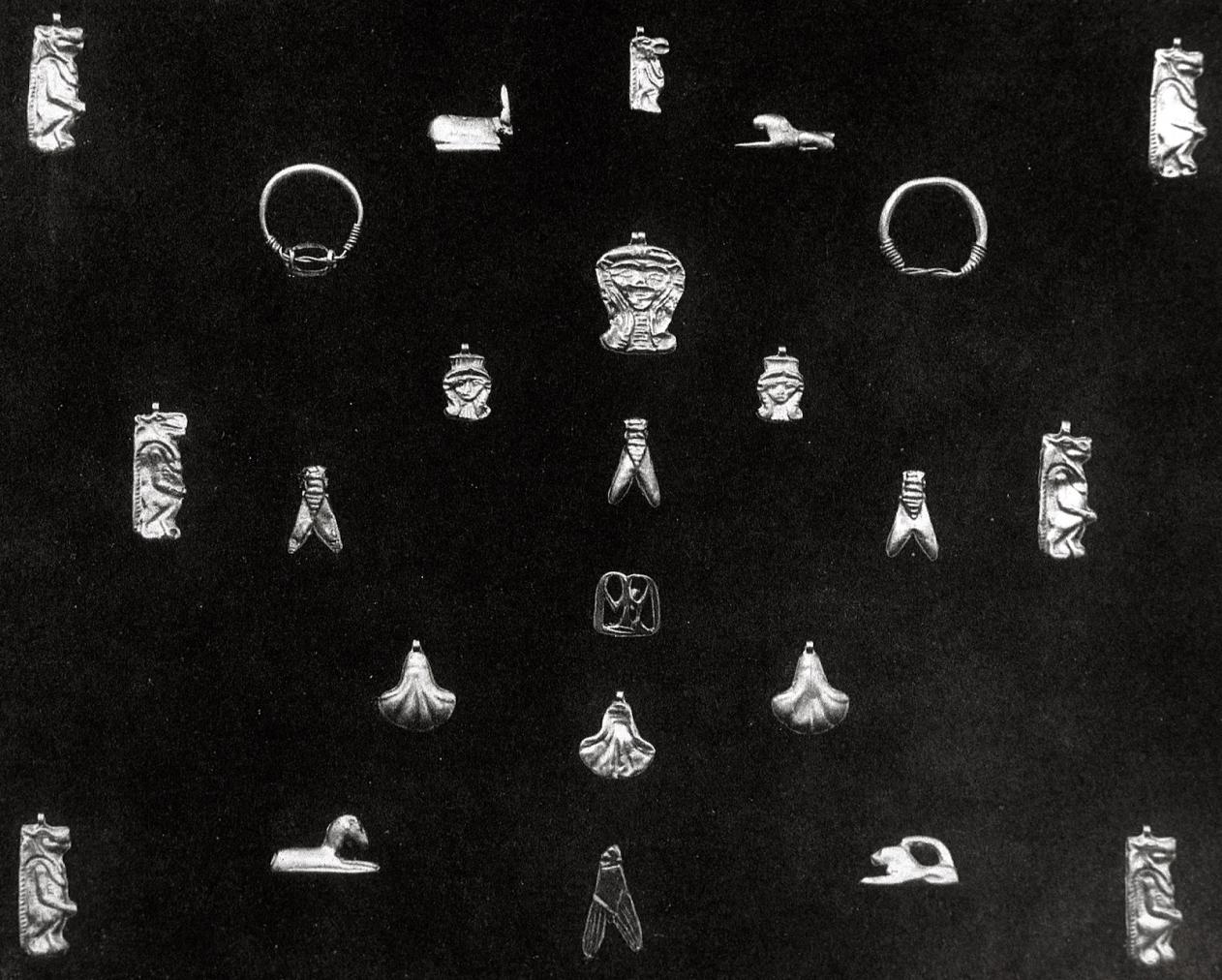
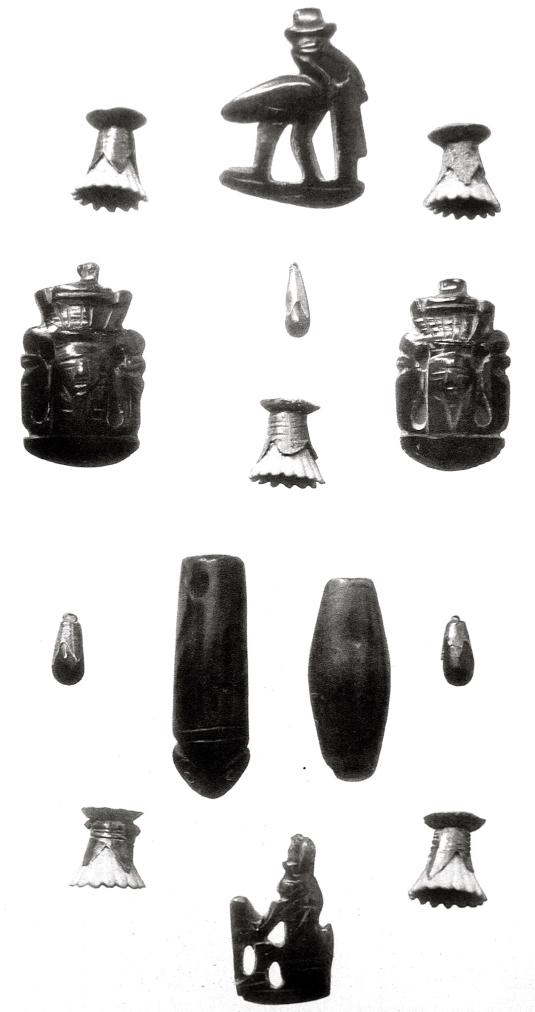
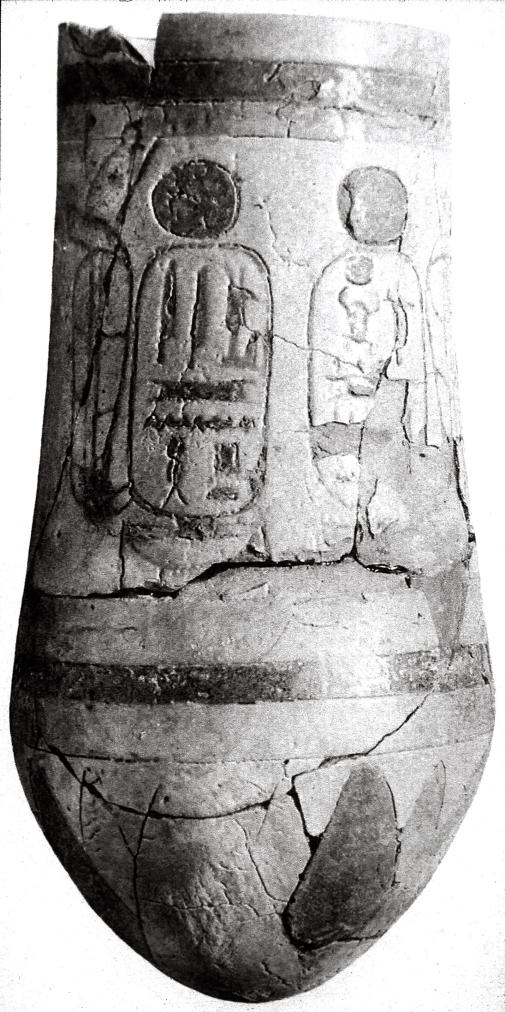
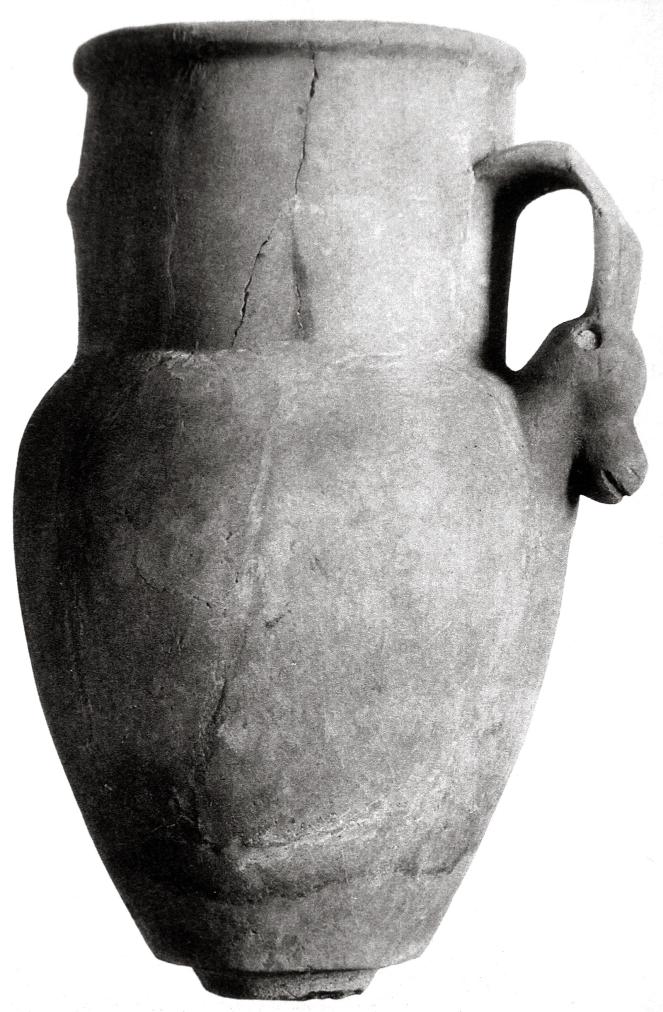
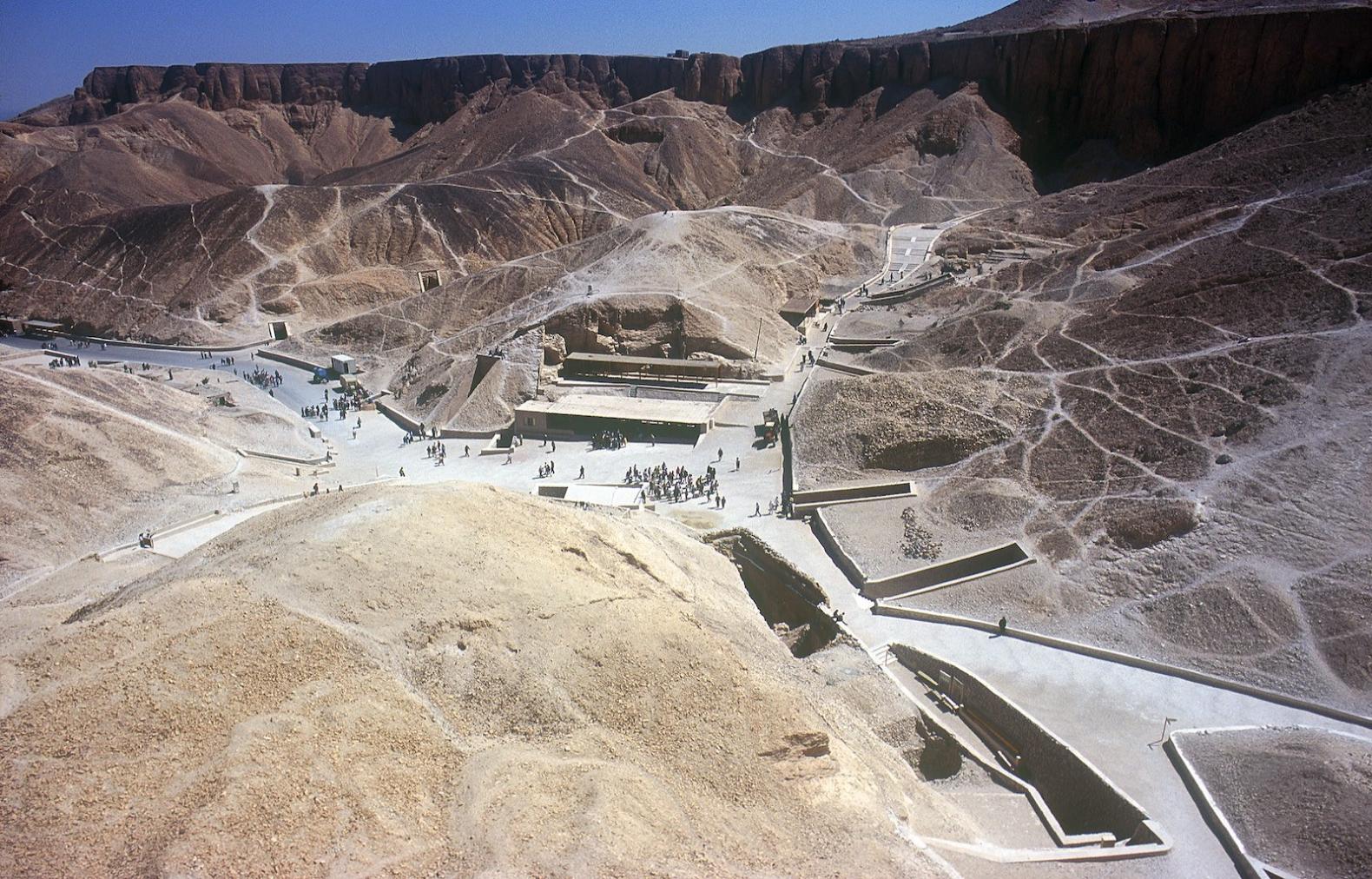
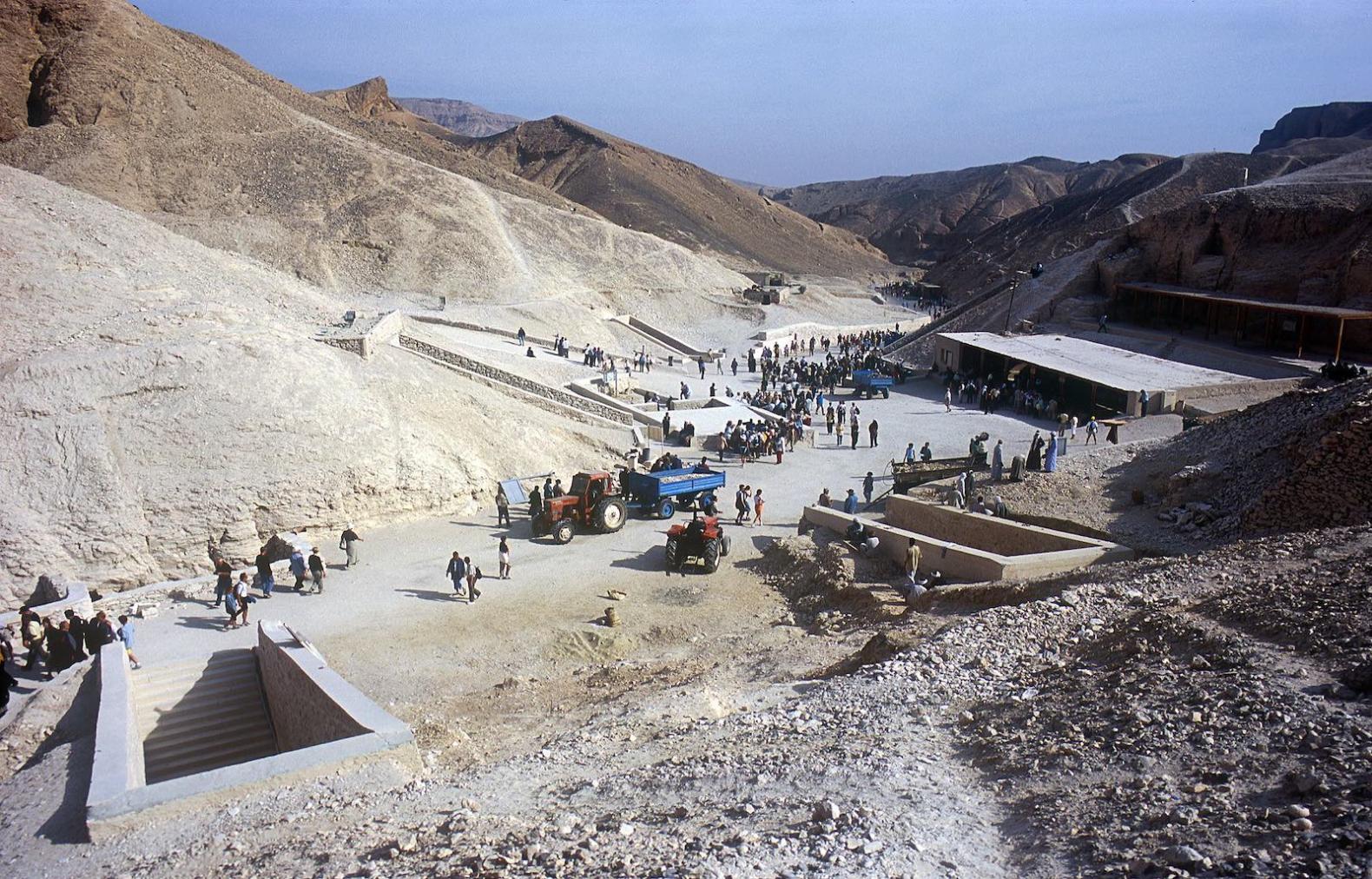
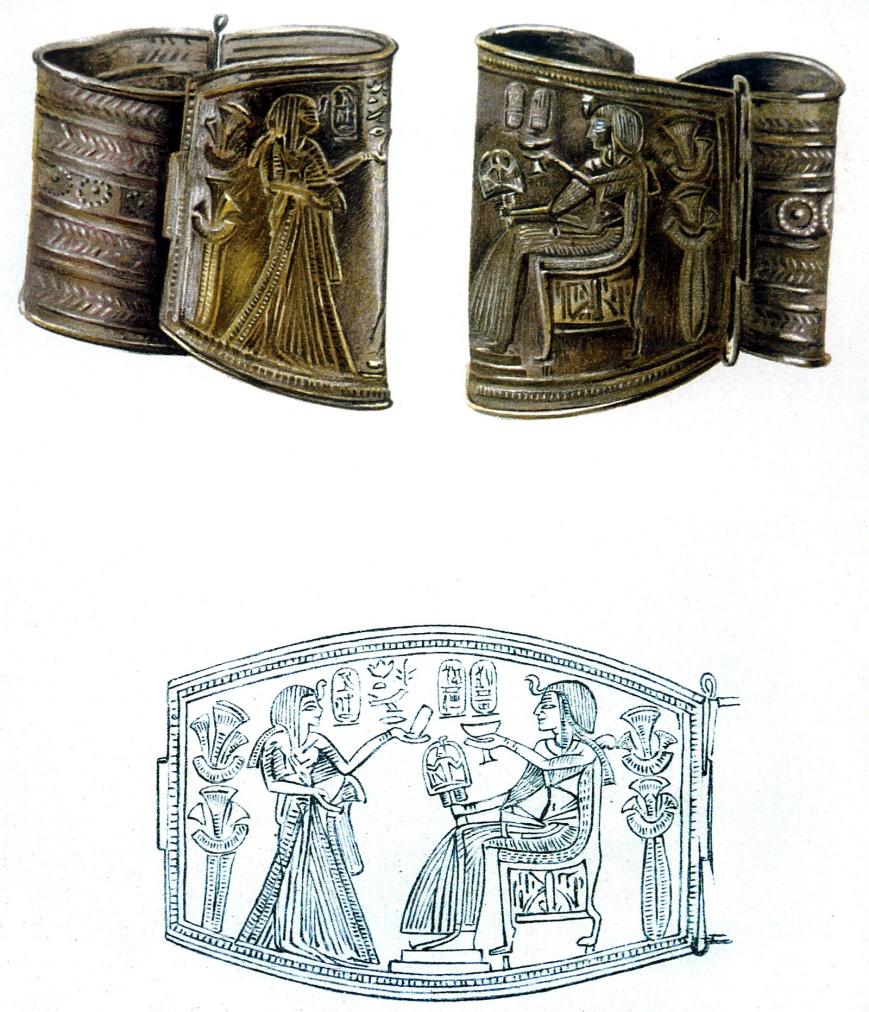
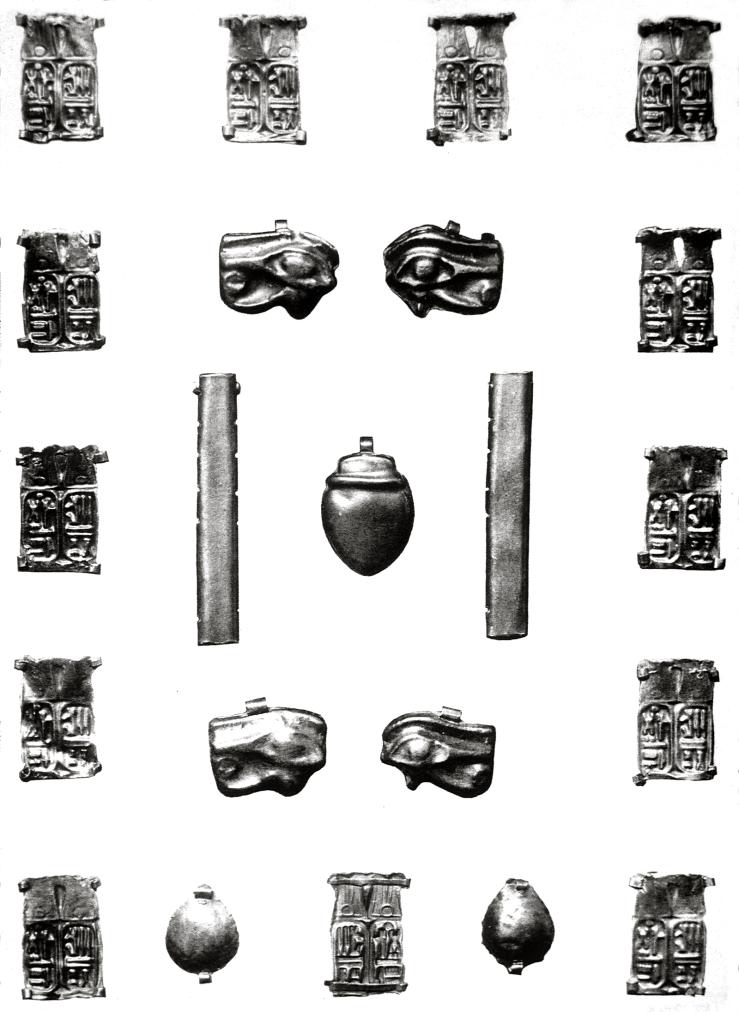
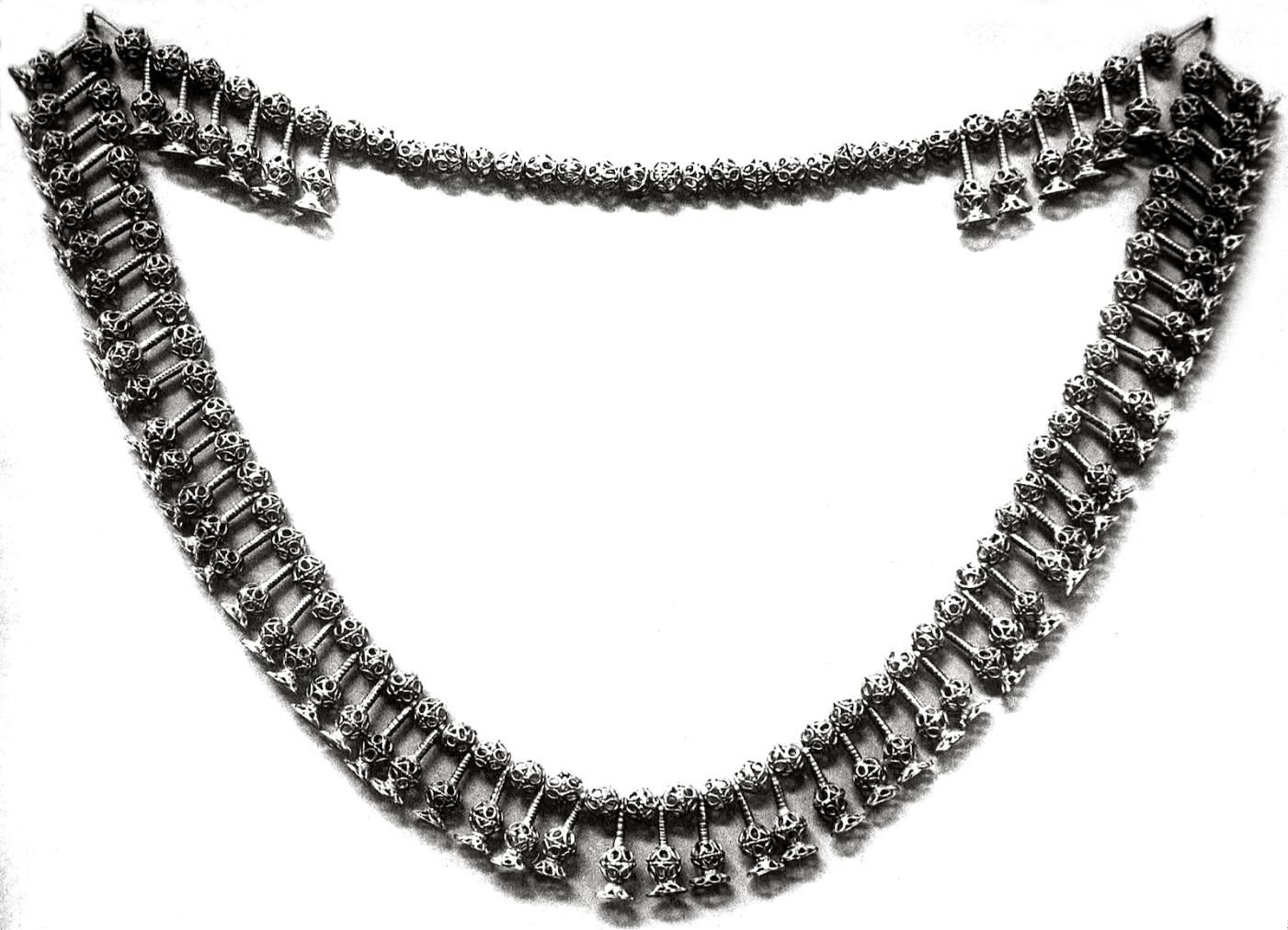
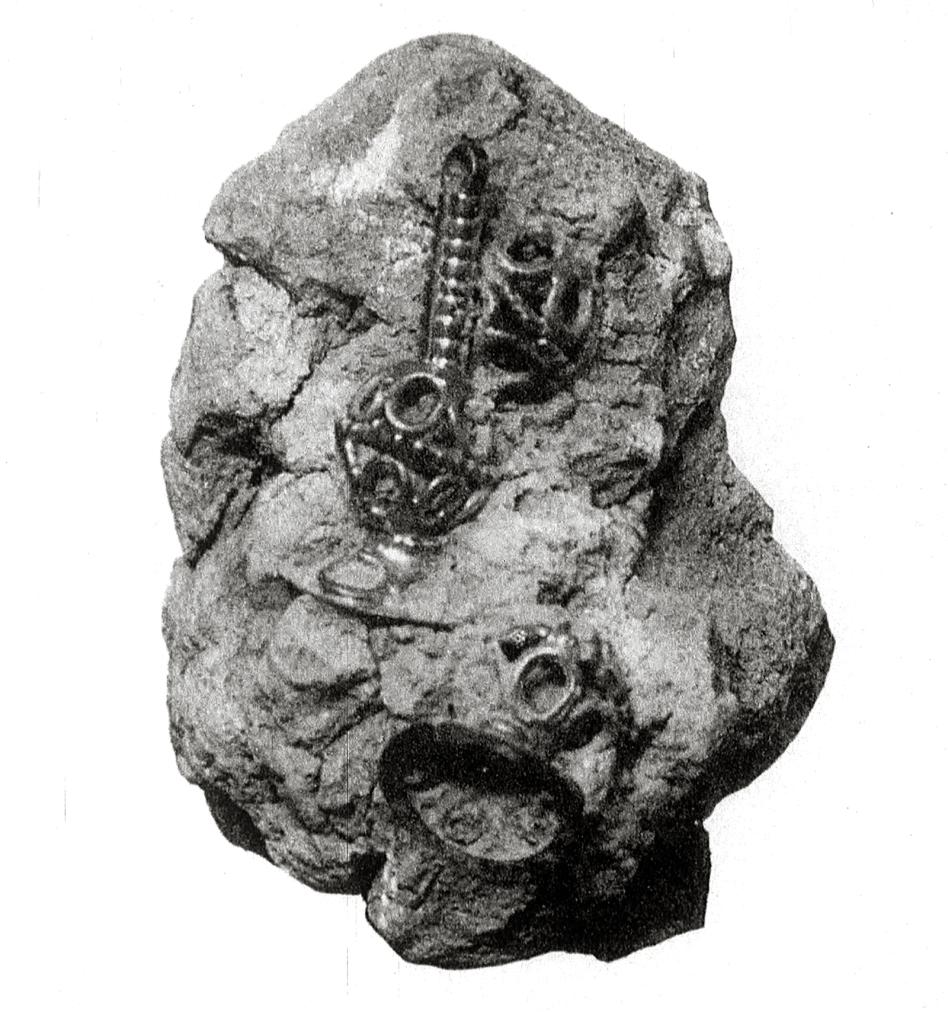
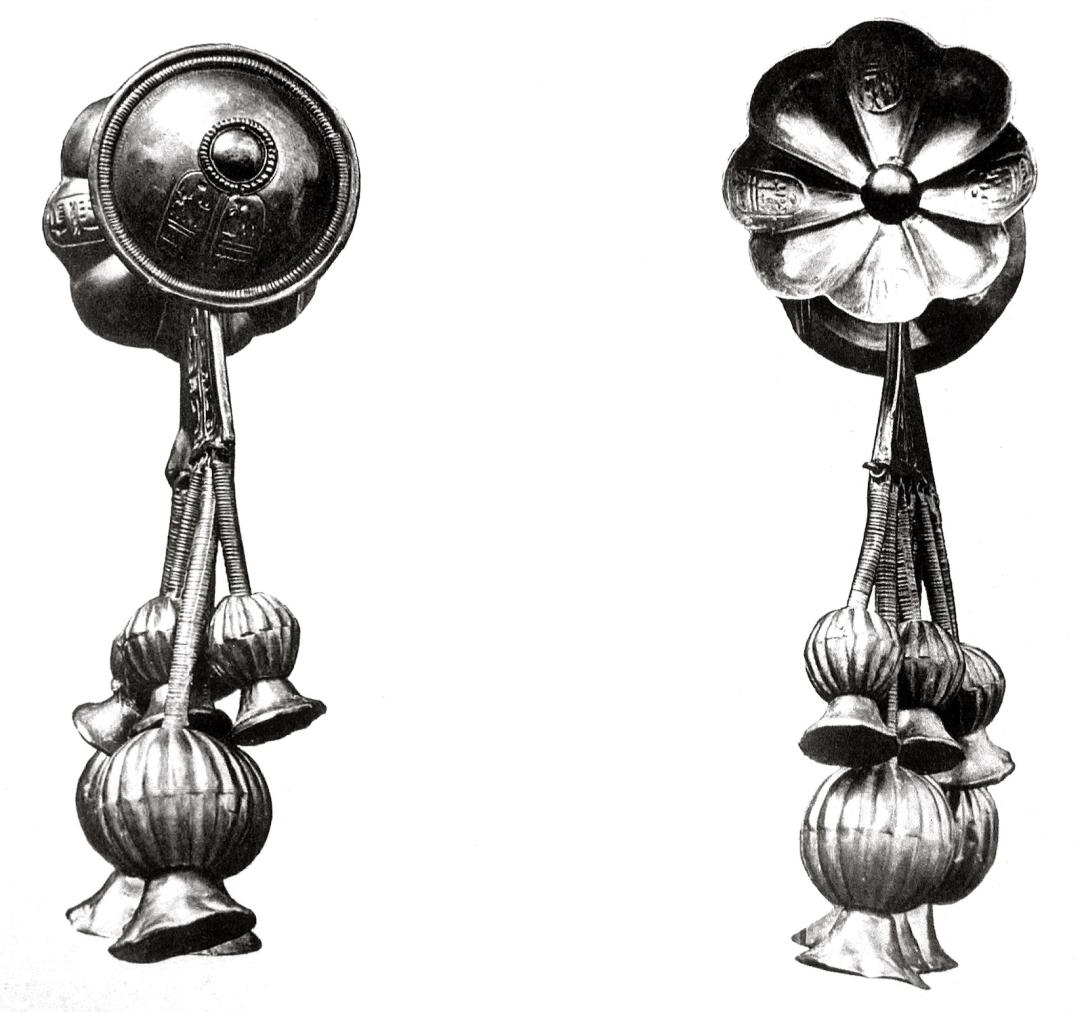
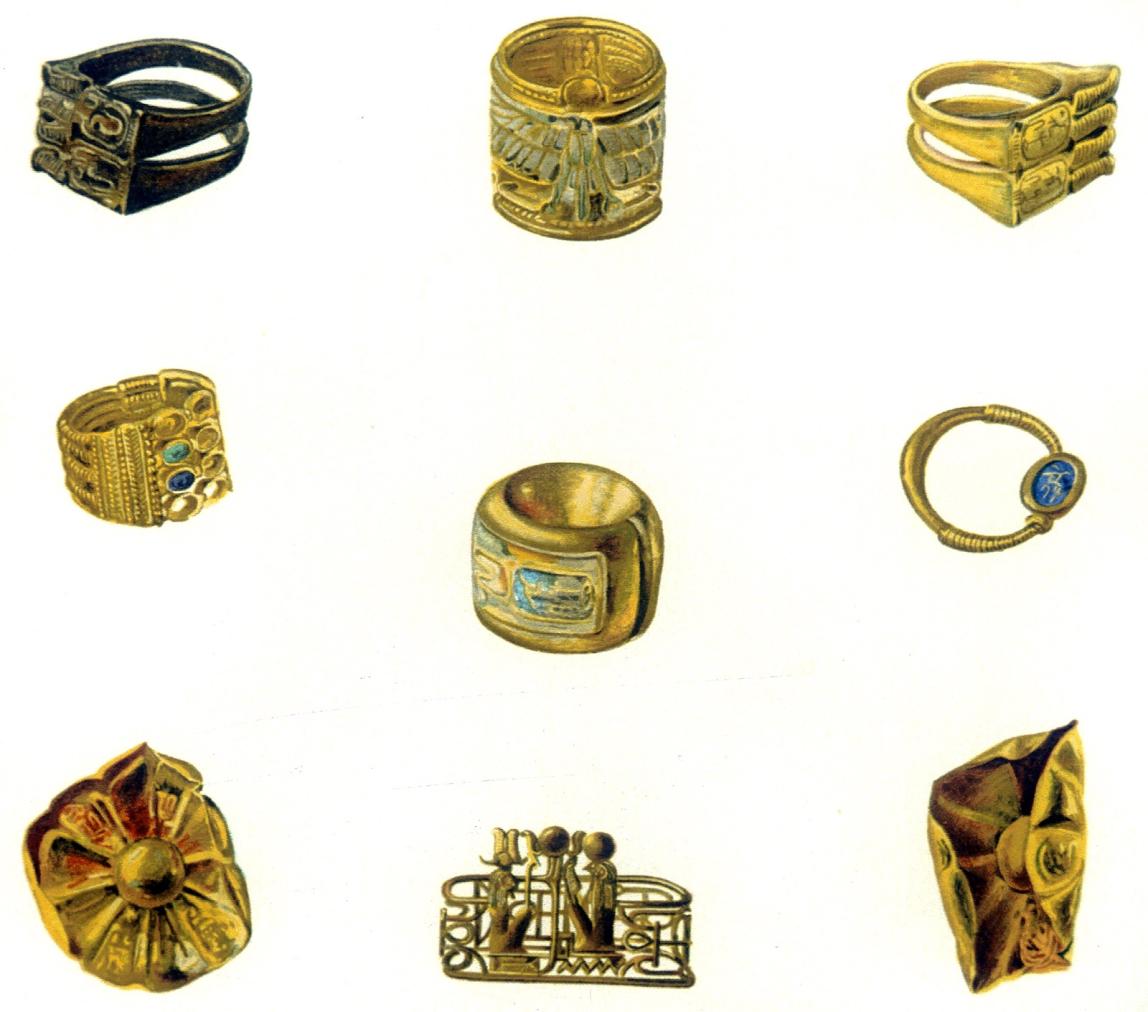
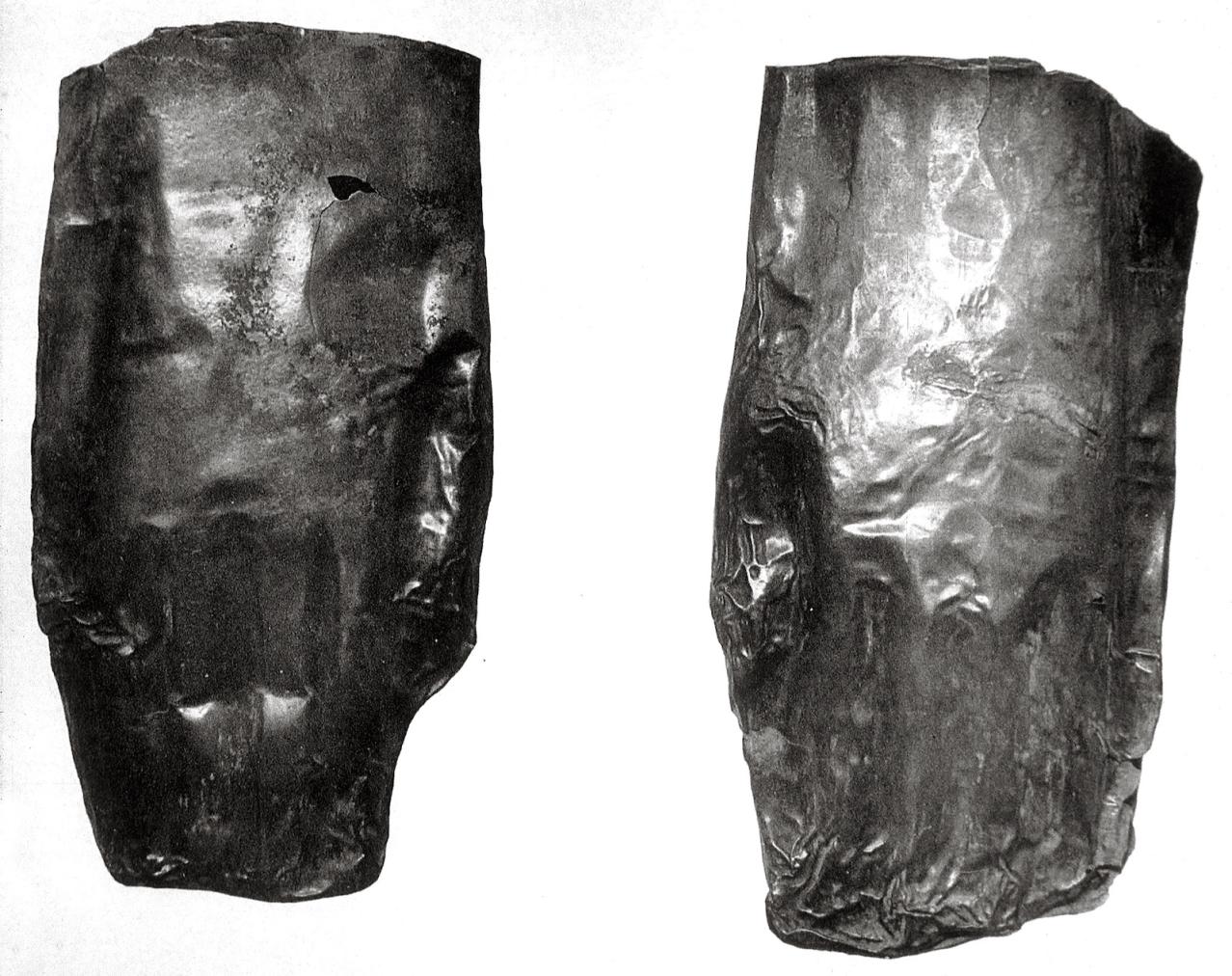
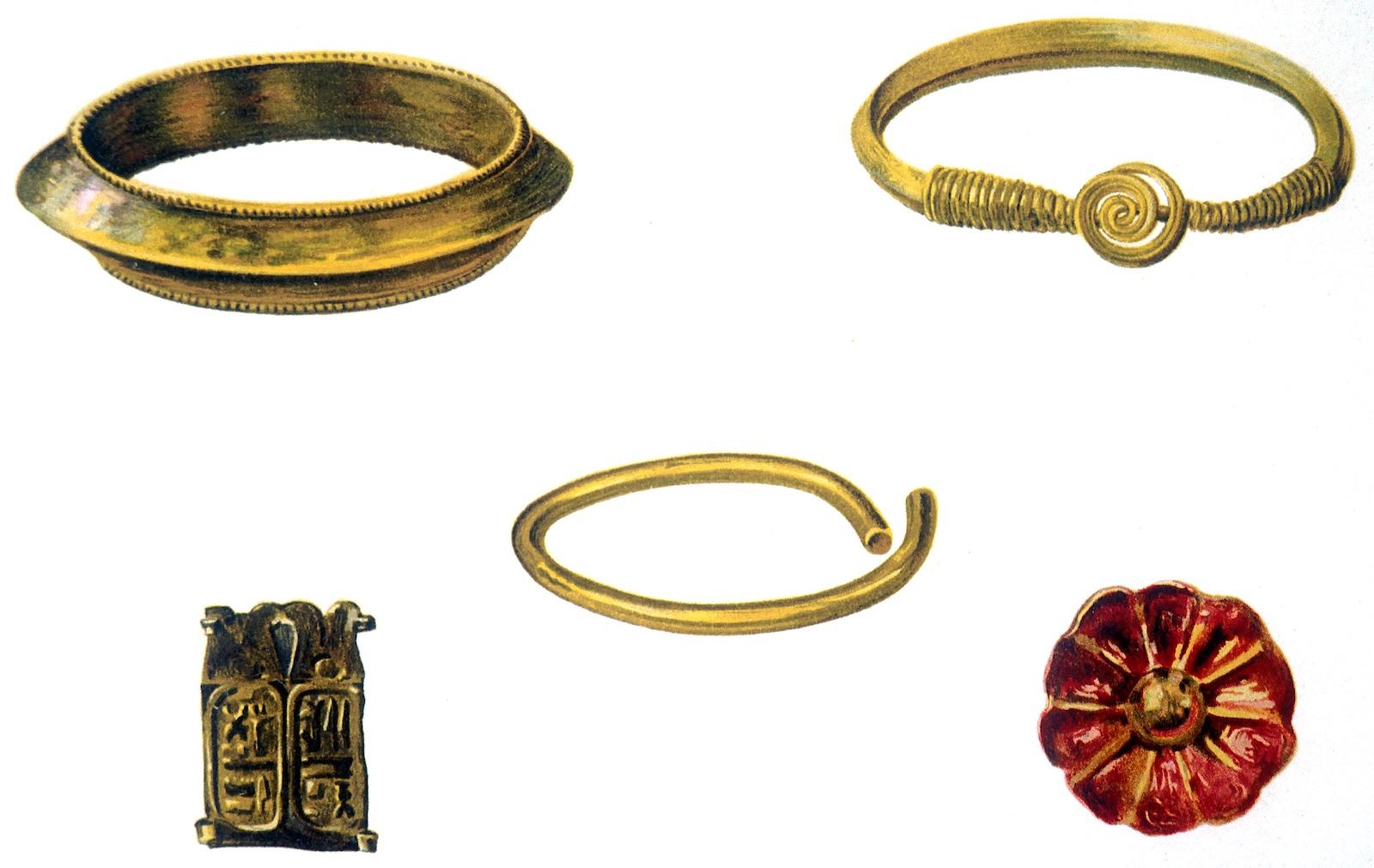
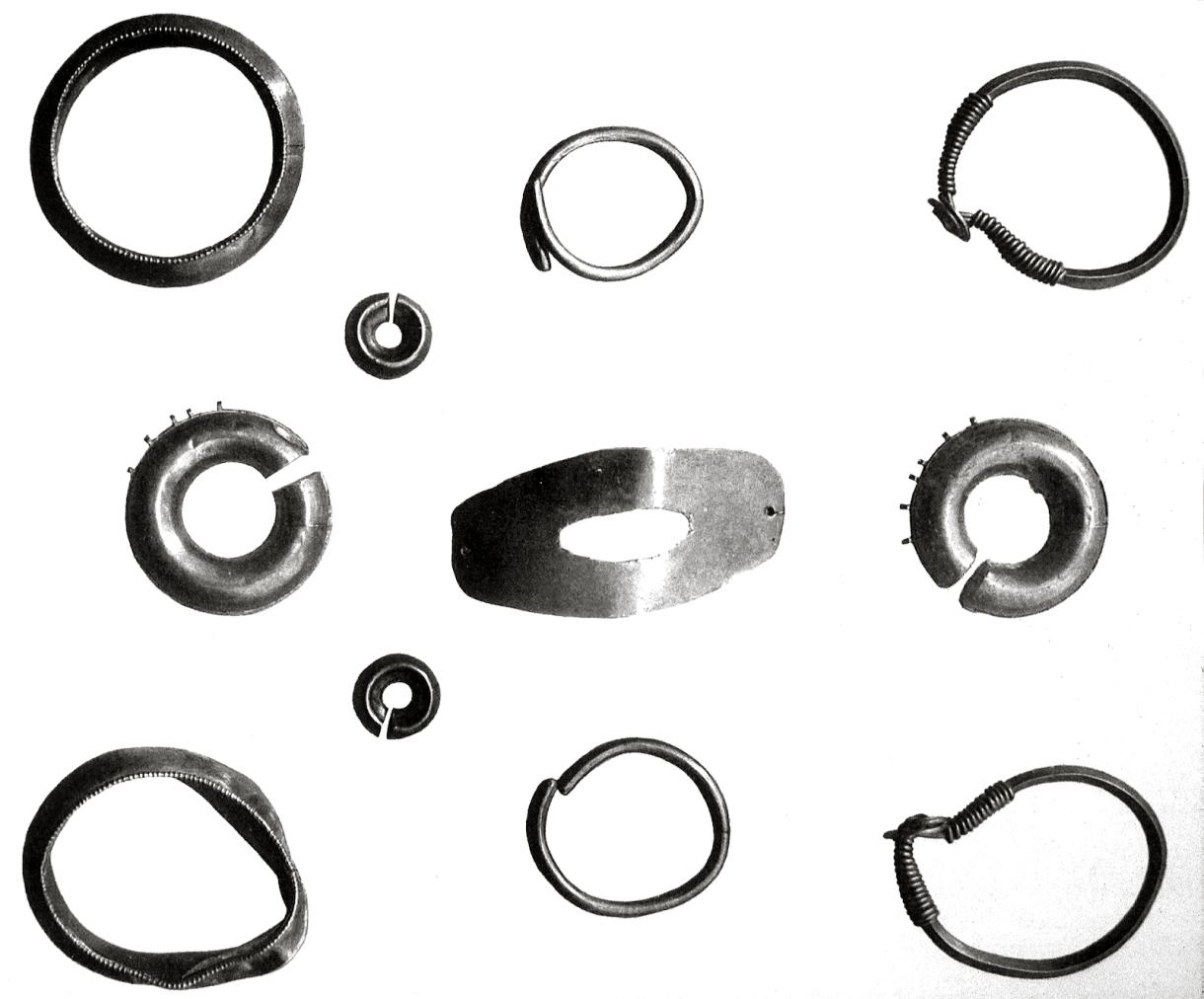
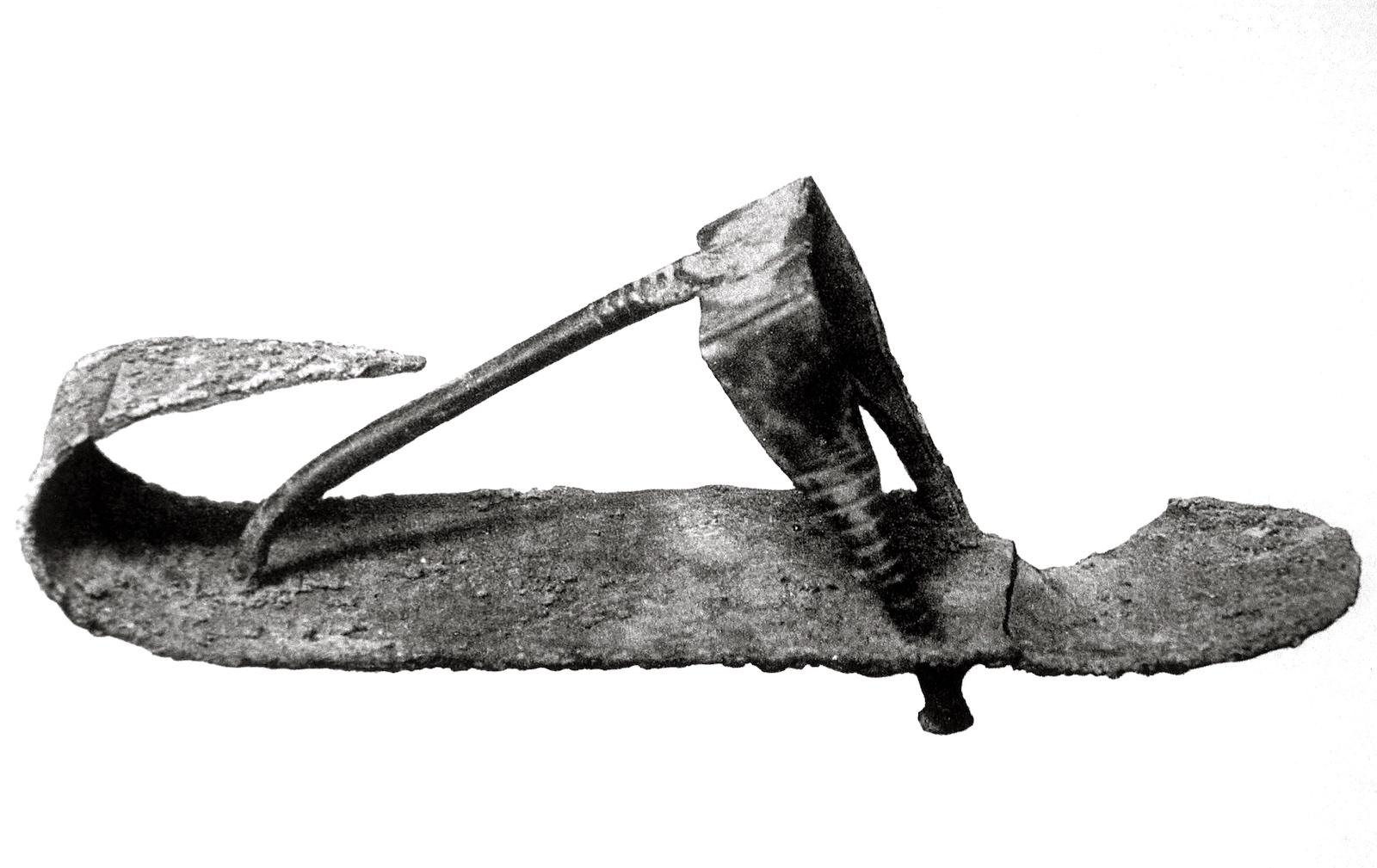
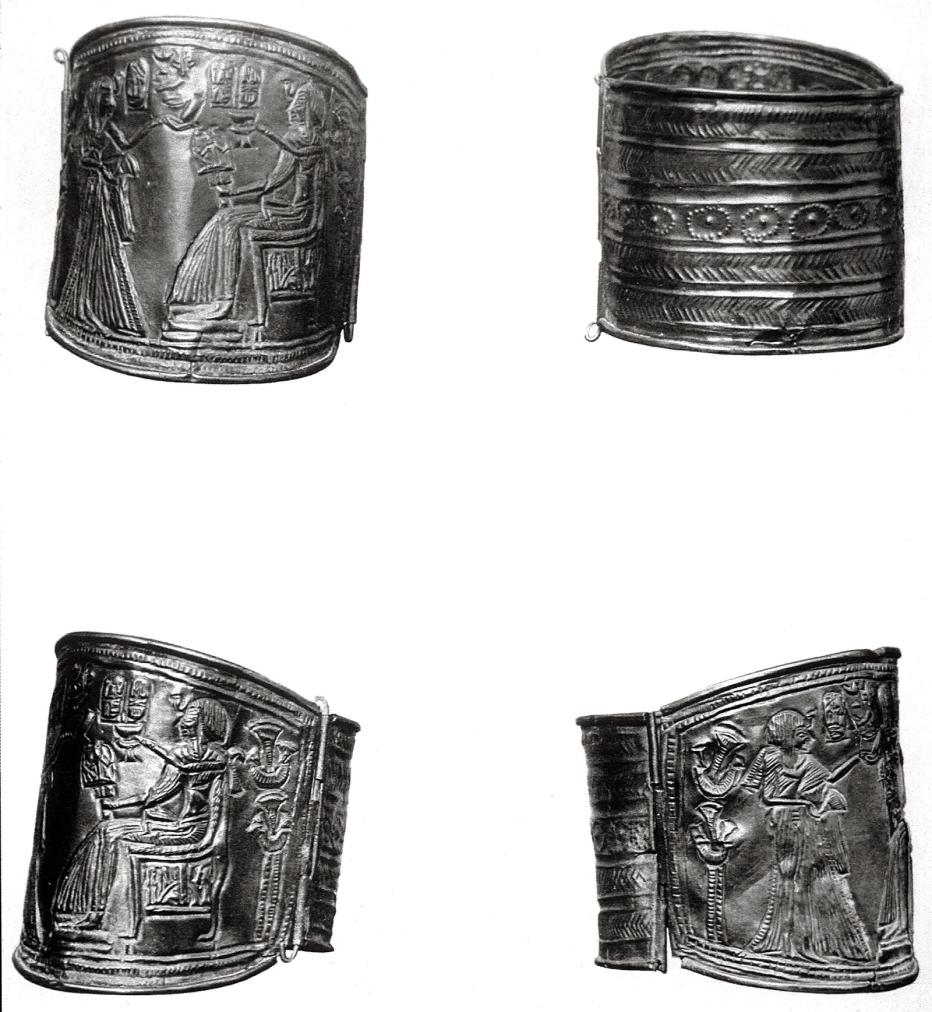
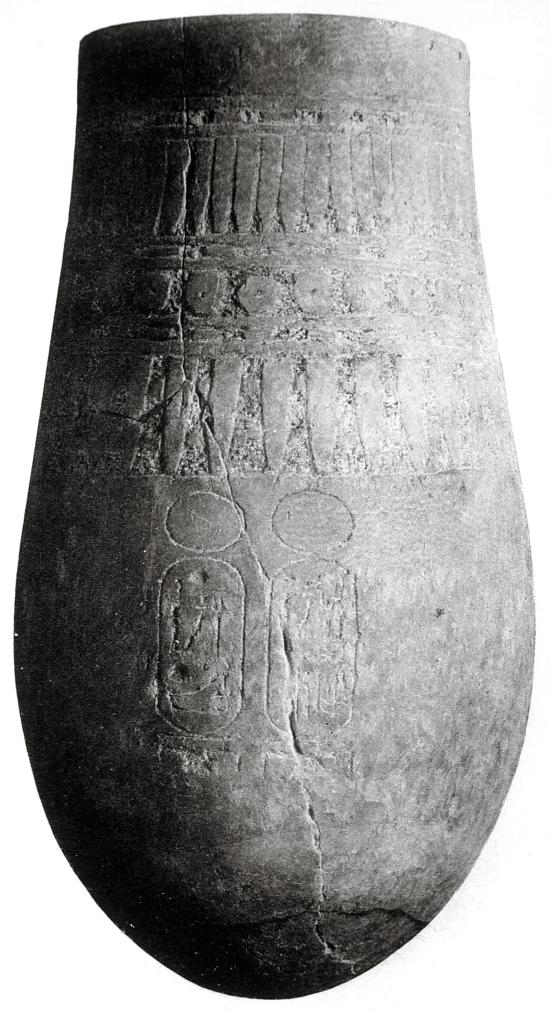
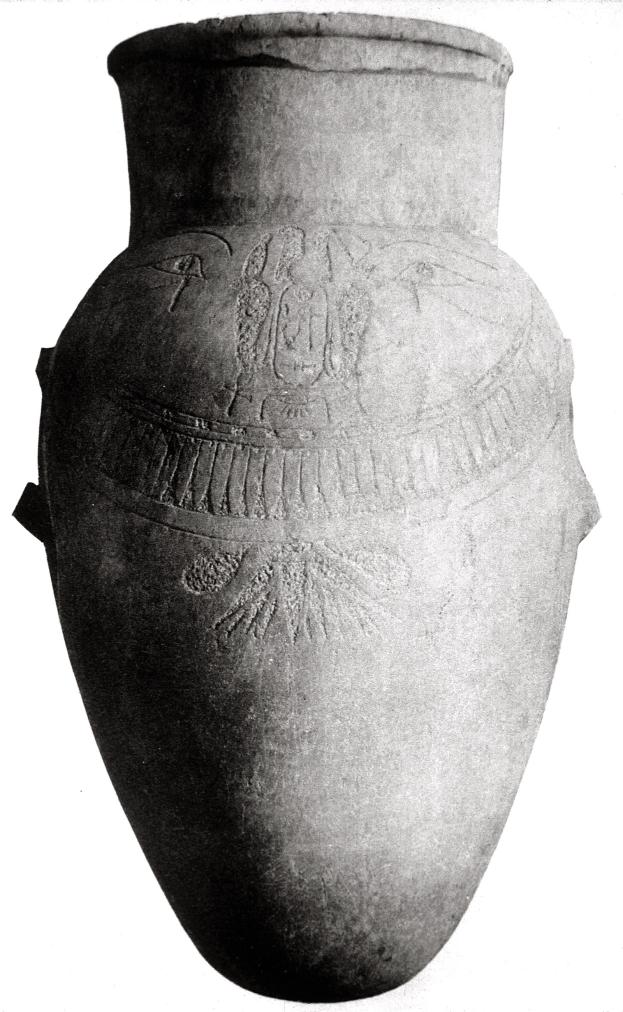
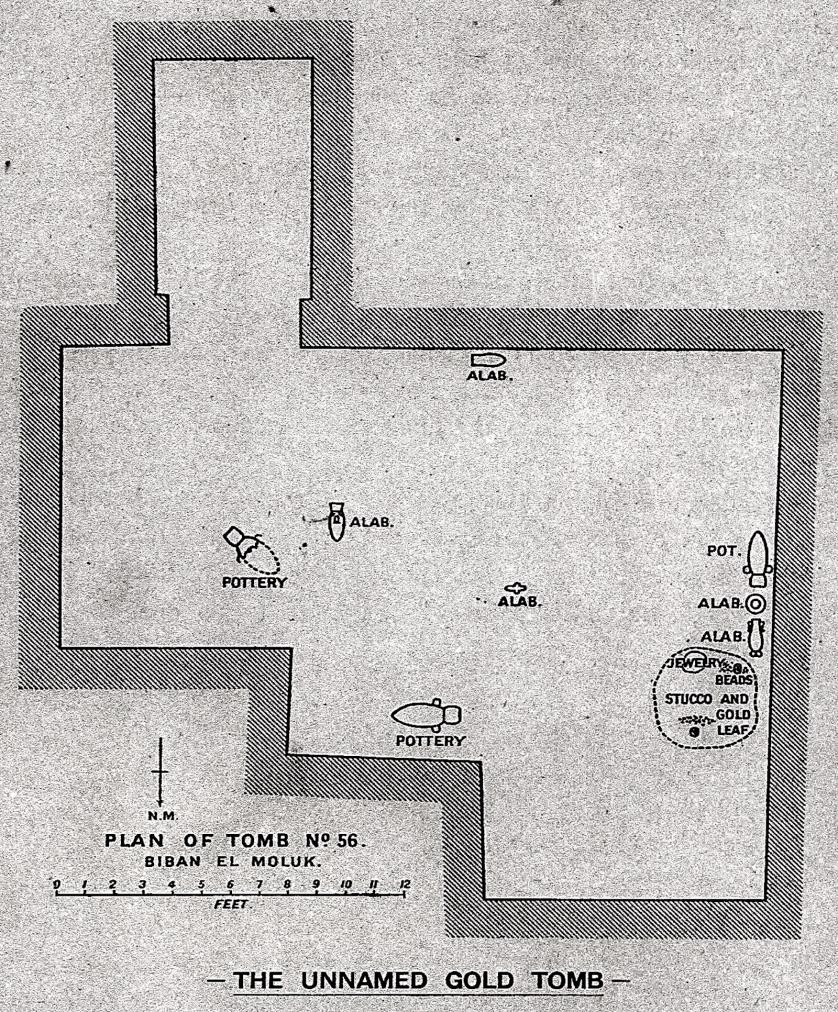
Articles
Anatomy of a Tomb: Ancient and Modern Designations for Chambers and Features
Bibliography
Aldred, Cyril P. Valley Tomb no 56 at Thebes. Journal of Egyptian Archaeology 49 (1963): 176-178.
Altenmüller, Hartwig. Bemerkungen zu den Königsgräbern des Neuen Reiches. Studien zur altägyptischen Kultur 10 (1983): 25-61.
Ayrton, Edward R. Recent Discoveries in the Biban el Moluk at Thebes. Proceedings of the Society of Biblical Archaeology. London. 30 (1908): 116-117.
Davis, Theodore M., Gaston Maspero, Edward Ayrton, Georges Daressy and E.H. Jones. The Tomb of Siphtah (= Theodore M. Davis' Excavations, Biban el Moluk, 4). London, 1908.
Forbes, Dennis C. The Gold Hoard of Queen Tausret and King Seti II. KMT 9, 2 (1998): 65-69.
Helck, Wolfgang. Königsgräbertal. Wolfgang Helck, Eberhart Otto and Wolfhart Westendorf (eds.). Lexikon der Ägyptologie. 7 vols. Wiesbaden, 1972-1992. 3: 523.
Pinch-Brock, Lyla. Collisions, Abandonments, Alterations, Tomb Commencements/Pits, and Other Features in the Valley of the Kings. In: Richard H. Wilkinson and Kent R. Weeks (eds.). The Oxford Handbook of the Valley of the Kings. Oxford: Oxford University Press, 2016. Pp. 117-134.
Porter, Bertha and Rosalind Moss. Topographical Bibliography of Ancient Egyptian Hieroglyphic Text, Reliefs, and Paintings. I, 2. The Theban Necropolis: Royal Tombs and Smaller Cemeteries. Oxford: Clarendon Press, 1964. Pp. 567.
Reeves, Carl Nicholas. Valley of the Kings: The Decline of a Royal Necropolis (= Studies in Egyptology). London: KPI, 1990. Pp. 131-133.
